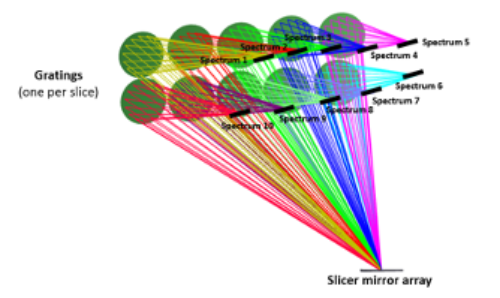LUCES
LUCES (Looking Up image slicers optimum Capabilities in the EUV for Space) is a project led by Durham University in collaboration with UCL. It is funded by the ETP programme of the UK Space Agency.
LUCES will evaluate the best results achievable in metallic slicers using diamond machining at Durham University. Nine slicer demonstrators will be produced, five in AL RSA with different slicer widths to determine the minimum width possible. The values for the slicer widths of these demonstrators have been selected considering the demand of current and future solar projects: 350µm, 70µm, 50µm, 15µm. These will consider spherical substrate. The demonstrator with a width of 70µm will also be produced using flat slicers. The other four demonstrators will investigate the material that offers the best surface roughness among: NiP, Brass, Nickel Silver and Copper. These four demonstrators will be produced in spherical substrate of 70 µm width to compare the results to those obtained in glass slicers in the project MINOS.
These developments have been proposed for applications in the instrument SISA (Spectral Imaging of the Solar Atmosphere) within the SPARK (Solar Particle Acceleration Radiation and Kinetics) space mission proposal. SISA is a compact integral field spectrograph proposed for the Extreme Ultra-Violet (~18nm) using an array of powered slicer mirrors and an array of curved diffraction gratings.

SISA conceptual layout (based on IGIS proposed by the University of Florida by S. Eikenberry and D. Stelter (C. Bourgenot, D. J. Robertson, D. Stelter, S. Eikenberry, Proc. SPIE Vol.9912, 99123M (2016)) using an array of powered slicer mirrors and an array of curved diffraction gratings.


/prod01/prodbucket01/media/durham-university/departments-/physics/cfai/CfAI-Webpage-Banner-smaller.jpg)